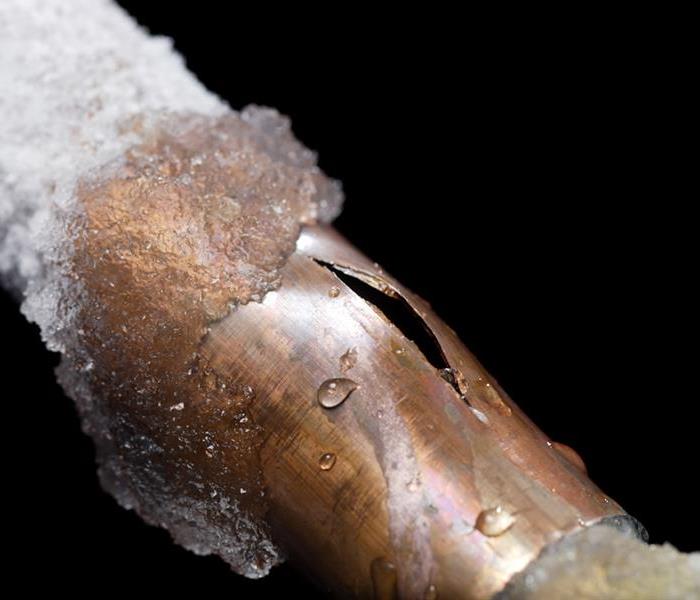Tips to help prevent freezing pipes
9/29/2016 (Permalink)
 A tiny break like this can cause thousands of dollars of damage. Especially if you are away when it happens.
A tiny break like this can cause thousands of dollars of damage. Especially if you are away when it happens.
Accuweather is predicting a long winter with cold and snowy conditions late into the spring of 2017. They are even warning the citrus crops will be in danger. Now is the time to prepare yourself and your home for this forecast. Being prepared can mean the difference between turning on your water and having your water turn on you.
There are many cases the pipe insulation is not worth it, the time and effort is not worth it. You must consider the value beyond the initial dollar. If you forgo this step and we have excessive cold they have an increased chance of freezing and bursting. A broken pipe can cause 10’s of thousands of dollars worth of damage. The time effort and stress can be overwhelming.
Pipes freezing and breaking is our number one call is the winter. While we are always here to help with any water damage you may incur, ideally we would like to show you how to help prevent it. This is not a very difficult project nor is it overly time consuming. It can also serve two purpose one to keep your pipes from freezing and two will hold in the heat better and reduce energy consumption by 3 to 4% a year. Every little bit helps.
How to protect from pipes freezing this winter.
Select the best wrap for the job. Polyethylene or neoprene foams or fiberglass tend to be the easiest and most cost effective. This will typically cost 10-15 for a smaller home and go up a little based on the size of the house. You must look at the size and length of the pipes that you will be covering. Please note if choosing the fiberglass option gloves are advised. When working with the pipes make sure you stay at least 6 to 8 inches away from the flue. Place the insulation seam side down and secure with duct tape or wire. That is pretty much it.
Be safe Be Prepared……





 24/7 Emergency Service
24/7 Emergency Service